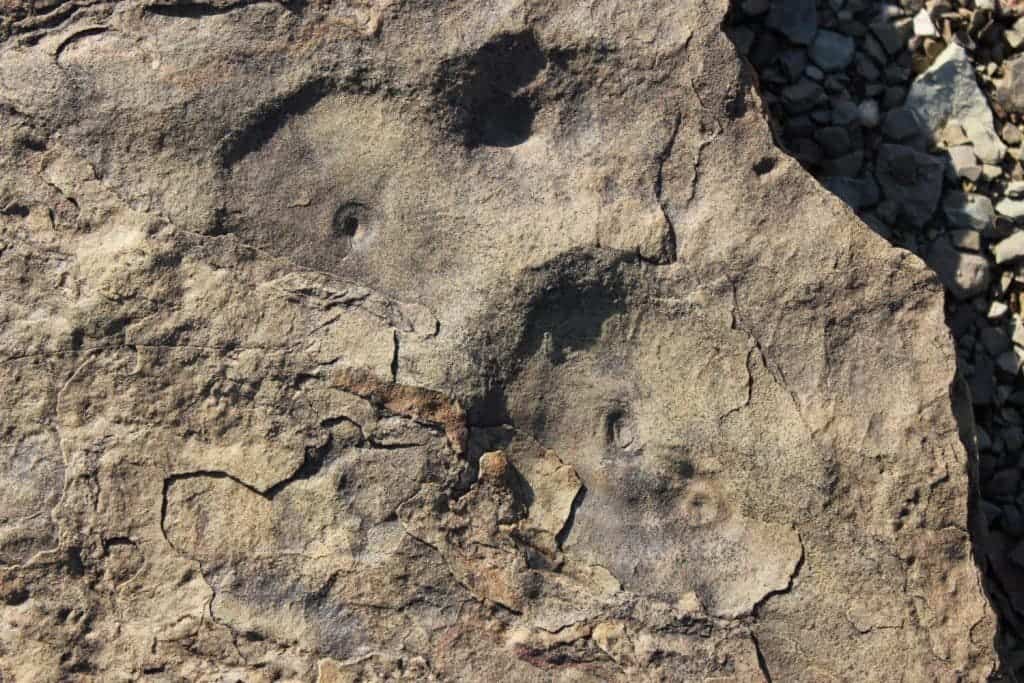The world’s first mass extinction might have been caused by animals called “ecosystem engineers,” a term that refers to organisms that create, modify or maintain habitats. In the case of the current study, the fossil evidence from Namibia suggests that newly evolved animals modified the environment so drastically that they drove older species to extinction.

Fossilized evidence of the relationship between Ediacarans and animals. Credit: Simon Darroch, Vanderbilt University
Approximately 540 million years ago, the Earth experienced the end-Ediacaran extinction, the world’s first mass extinction. Ediacarans were the first multicellular organisms, which evolved from various types of single-celled organisms. Shaped like discs and tubes, they were largely immobile and inhabited marine environments.
After 60 million years of the Ediacarans spreading around the Earth, the world’s first animals – the metazoans – evolved. With the ability to move spontaneously and independently, animals burst onto the Earth in what is now known as the Cambrian explosion, a 25-million-year period when many of the modern animal families evolved.
“These new species were ‘ecological engineers’ who changed the environment in ways that made it more and more difficult for the Ediacarans to survive,” said Simon Darroch, assistant professor of earth and environmental sciences at Vanderbilt University and lead author of the study.
Previous research by Darroch and his team revealed communities of Ediacarans that appeared to be stressed. The fossils examined in the current paper represent a community of both Ediacarans and animals right before the Cambrian explosion, providing the best evidence thus far of the unique ecological association between these groups and highlighting the struggle of the Ediacarans as animals began to diversify.
“With this paper we’re narrowing in on causation; we’ve discovered some new fossil sites that preserve both Ediacara biota and animal fossils (both animal burrows – ‘trace fossils’ – and the remains of animals themselves) sharing the same communities, which lets us speculate about how these two very different groups of organisms interacted,” Darroch said.
Darroch also suggests that modern humans can learn from what is observed in the new fossil evidence given what is happening in the world today.
“The end-Ediacaran extinction shows that the evolution of new behaviors can fundamentally change the entire planet, and today we humans are the most powerful ‘ecosystems engineers’ ever known,” he said.
Journal Reference: A mixed Ediacaran-metazoan assemblage from the Zaris Sub-basin, Namibia. 4 July 2016. 10.1016/j.palaeo.2016.07.003









